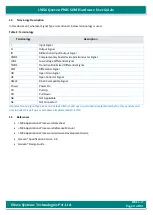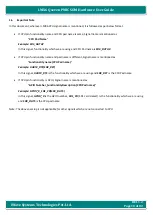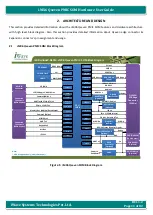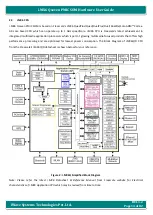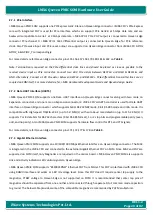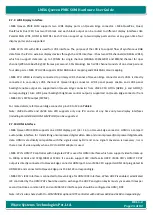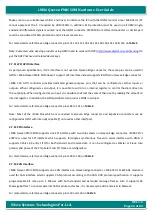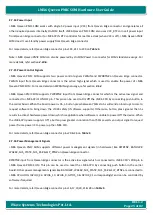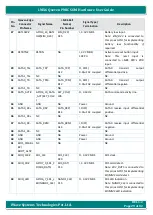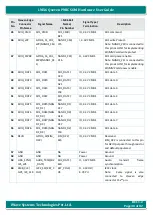
REL 1.2
Page 23 of 82
i.MX6 Qseven PMIC SOM Hardware User Guide
iWave Systems Technologies Pvt. Ltd.
2.7.9
LVDS Display Interface
i.MX6 Qseven PMIC SOM supports two LVDS display ports on Qseven Edge connector. i.MX6 QuadPlus, Quad,
DualPlus & Dual CPU has two IPU block and each block output can be routed to different display interfaces like
Parallel RGB, LVDS, HDMI & MIPI DSI. Each IPU can support up to two display ports and so at any given time four
display ports can be supported.
i.MX6 CPU’s IPU with LDB is used for LVDS interface. The purpose of the LDB is to support flow of synchronous RGB
data from the IPU to external display devices through the LVDS interface. it has two LVDS channels (LVDS0 & LVDS1)
which can support data rate up to 170Mhz for single channel (WUXGA 1920x1200) and 85Mhz/channel for dual
channel (WXGA 1366x768 @ 60 frames per second, 35% blanking). Each LVDS channel consists of one clock pair and
four data pairs. i.MX6 CPU LVDS supports 18bit RGB colour mapping and 24bit RGB colour mapping.
i.MX6 CPU LVDS0 is directly connected to primary LVDS channel of Qseven Edge connector and LVDS1 is directly
connected to secondary LVDS channel of Qseven Edge connector. LVDS panel power enable and LVDS panel
backlight enable output are supported on Qseven Edge connector from i.MX6 CPU GPIOs (GPIO2_4 and GPIO2_5
correspondingly). Also LVDS panel backlight brightness control output is supported on Qseven Edge connector from
i.MX6 CPU’s PWM output (PWM2).
For more details, refer Qseven Edge connector pins 99 to 123 on
Note: i.MX6 Duallite and i.MX6 Solo CPU supports only one IPU and so at any time only two display interfaces
(including Parallel RGB, HDMI & MIPI DSI) can be supported.
2.7.10
HDMI Interface
i.MX6 Qseven PMIC SOM supports one HDMI display port (Ver. 1.4) on Qseven Edge connector. HDMI is a compact
audio/video interface for transmitting uncompressed digital video data and uncompressed/compressed digital audio
data. HDMI is electrically compatible with the signals used by DVI and so no signal conversion is necessary, nor is
there a loss of video quality when a DVI-to-HDMI adapter is used.
i.MX6 CPU’s HDMI TX controller with integrated PHY is used for HDMI interface which can support video formats up
to 1080p at 60Hz and 720p/1080i at 120Hz. It can also support CEC interface & HDCP. i.MX6 CPU’s HDMI TX PHY
output is directly connected to Qseven Edge connector HDMI port. Also i.MX6 CPU supports HDMI Hot plug detect &
HDMI CEC and connected to Qseven Edge pins 153 & 124 correspondingly.
i.MX6 CPU’s I2C2 interface is connected to Qseven Edge for HDMI DDC interface. When HDCP is enabled, a dedicated
I2C controlled by the HDMI PHY should be used to exchange the HDCP encryption key & must sync several times per
second (not like a common I2C) and so i.MX6 I2C2 interface pins should be configured as HDMI_DDC.
Note: I2C2 is also shared with On-SOM PMIC & optional RTC controller with address 0x08 and 0x68 correspondingly.

